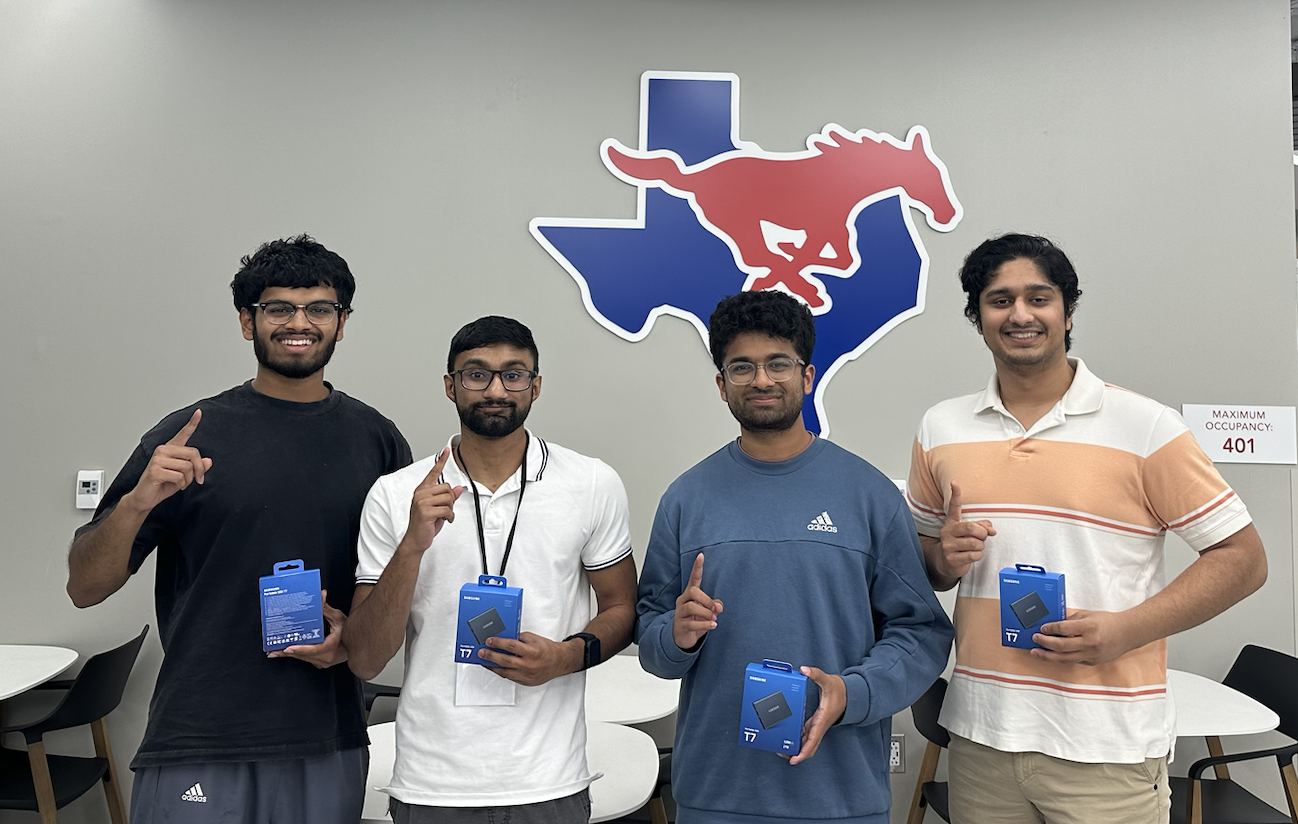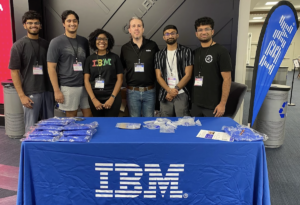HackSMU Winner
 Park-EZ
Park-EZ



-
Sahishnu Sagiraju
-
Sherwin Thirumavalan
-
Adit Pathania
Project Acknowledgements
We would like to extend our sincere thanks to HackSMU for providing us with this incredible opportunity to showcase our innovation. A special thanks to our sponsors ParkHub, Cartesi, IBM, and Invesco for their generous support, which made this project possible. Additionally, I’d like to give a heartfelt shout-out to my amazing teammates: Sahishnu Sagiraju, Sherwin Thirumavalan, and Adit Pathania—your dedication and teamwork brought Park-EZ to life.
Check out our Devpost here.
Park-EZ: Revolutionizing Accessible Parking Through Computer Vision
The HackSMU event was an incredibly welcoming experience, filled with excitement, innovation, and lots of networking. Booths from sponsors like IBM and Cartesi provided valuable insights and sparked many creative ideas. However, it wasn’t all smooth sailing. Throughout the event, our team faced several challenges, and the night stretched long—working tirelessly until 6 AM. After hours of brainstorming, we finally landed on the idea that would become Park-EZ.
Inspiration:
At Park-EZ, we believe accessibility shouldn’t be left to chance. Our project was born from the desire to solve a real-world issue: the difficulty disabled drivers face when locating accessible parking spots in busy areas such as hospitals and garages. We were inspired by ParkHub’s innovative solutions and decided to take on the challenge of creating a computer vision algorithm to detect accessible vehicles. From there, we expanded the concept into a platform that simplifies the parking experience for disabled users.
What It Does:
Park-EZ utilizes a custom algorithm designed to detect the International Symbol of Access (ISA) on license plates or windows in real-time video streams. This detection is fast, lightweight, and highly accurate. By leveraging open datasets, our algorithm processes a 30fps video stream and outputs bounding boxes around detected symbols, complete with confidence scores—ensuring quick and precise identification without dropped frames.
But we didn’t stop at detection. Our project goes one step further by offering a user-friendly platform where disabled drivers can check the availability of accessible parking spots in real time. This feature saves them valuable time and reduces stress, especially when navigating multi-level garages or large parking lots. Park-EZ integrates seamlessly with ParkHub’s existing technology, making the parking experience smoother and more efficient.
How We Built It:
- Algorithm: We trained our model using open computer vision datasets to detect ISA symbols on vehicles. The algorithm efficiently processes real-time video streams, identifying handicapped tags with output bounding boxes and confidence scores.
- Simulation: To bring the concept to life, we built a simulation using a Raspberry Pi 5, with LEDs indicating parking spot availability. We developed a web dashboard that enables users to monitor real-time parking data with an intuitive interface.
- Web Platform: The platform allows disabled users to remotely check available accessible parking spots, helping them plan trips and avoid unnecessary time spent searching for spots.
Challenges We Faced:
The most significant challenge was ensuring that our algorithm could process video streams fast enough to maintain 30fps without dropping frames, all while achieving high accuracy in detecting the ISA symbol. Additionally, integrating the Raspberry Pi-based simulation with the web platform and making the dashboard reflect real-time parking availability was another hurdle we overcame.
Accomplishments We’re Proud Of:
- Developing a user-friendly platform that has the potential to make parking more accessible for disabled individuals.
- Creating a small-scale simulation with the Raspberry Pi 5, demonstrating the viability of our concept.
What’s Next for Park-EZ:
We see enormous potential for Park-EZ beyond this hackathon. Our next steps include refining the platform to allow users to reserve spots in advance or receive notifications when accessible parking becomes available nearby. We also plan to incorporate machine learning models to predict spot availability and further enhance the user experience. Finally, we aim to take our simulation into the real world through collaborations with parking facilities.






